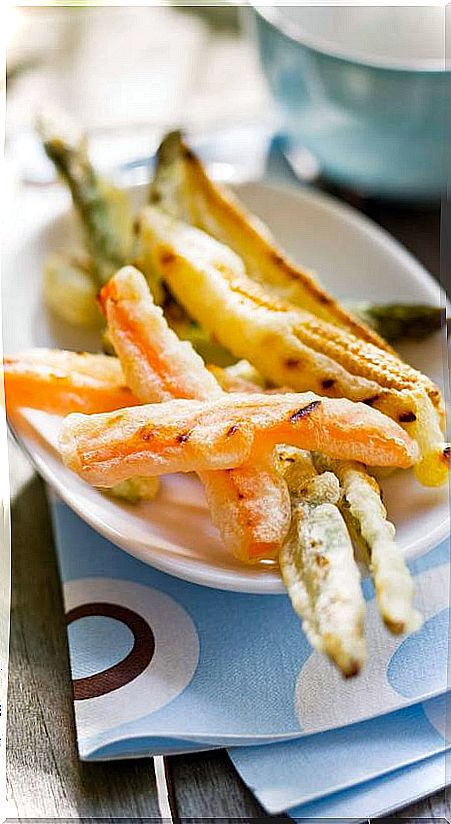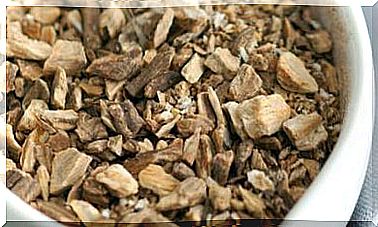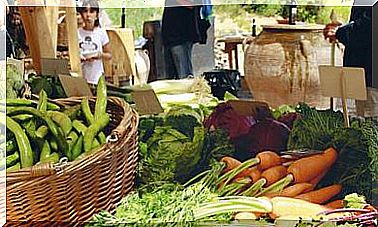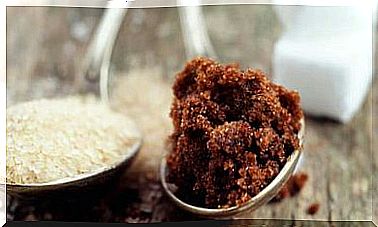How To Make A Perfect Vegetable Tempura
To prepare a crispy, light and tasty tempura, the trick is in the batter batter. With these cooking tricks and this recipe, you will finally be able to cook an appetizing vegetable tempura.

- The best vegetables to make tempura
- How to prepare vegetables to make tempura
- Tempera dough recipe
- Tricks to prepare the dough for tempura
- The best oil for cooking tempura
- How to fry tempura correctly
Tempura is not just any fried. The crispy, light colored, light and tasty batter is not like other batters we usually make, it has its trick.
In Japan, where tempura originates from, it is something that is taken very seriously. There are chefs in charge exclusively of this preparation who make the mixture, choose the ingredients and execute a perfect frying. So is it impossible, to make tempura at home? No, of course not, but we will have to take into account a few things, as well as practice to improve.
The best vegetables to make tempura
The ingredients to coat, compared to the dough and oil, are the least important. Almost any vegetable or vegetable can be made into tempura, taking into account its cooking times. For example, sweet potatoes and pumpkins need more time to cook than green beans and peppers, so it is convenient to cut them into thin slices or strips to help them cook quickly. Among the most common vegetables to make tempura are:
- French green beans (small round ones
- Champignons or mushrooms (both white and oyster mushrooms, shiitake, etc)
- Sweet potato
- Kabocha squash
- Peppers
- Lotus root
- Aubergines
- Shiso leaves (green perilla)
- Onion
- Okra
- Broccoli in florets
- Bimi
- Cauliflower
- Carrot
- Spring onion
- Wild asparagus
- Zucchini
- kale
- Beetroot
- Parsnip
How to prepare vegetables to make tempura
You always have to wash the vegetables well and dry them with kitchen paper so that they do not have excess water that can jump into the oil and so that the tempura dough sticks well. Each type of vegetable will need a preparation. For instance:
- Round green beans just have to remove the ends
- The shiitake, better fresh and sliced (unless they are small, then it is better to make a cross cut in the hat and leave them whole)
- Peppers, sliced
- Onion, in rings
- The aubergine, always better the Chinese or Japanese (the one that is long and thin) and cut into thin slices
- Sweet potatoes and other hard vegetables, peeled and thinly sliced or on sticks (as to make straw potatoes),
- The chopped and stemless kale …
Tempera dough recipe
The basic formula of any tempura is made up of flour and very cold water. The quantities, by volume, would be: 1 part of flour and starch for 1 part of liquid.
- If we use 1 cup of flour, we will add 1 cup of very cold water. For each cup of flour we will add ½ teaspoon of baking yeast and ¼ teaspoon of salt. And for the flour mixture, substitute 2-3 tablespoons of wheat flour for the same amount of cornstarch.
- Mix it all together in a bowl with a fork, a few chopsticks, or a whisk, just enough to mix. If there are little lumps, nothing happens, better that than beating it too much.
- It is important that before making the mixture you already have the ingredients prepared and the fryer or saucepan with heating oil, because another important part is to cook it quickly.
Tricks to prepare the dough for tempura
This is the critical part. How do we make a light batter, that is not soft, that does not let the oil pass inside, and that it is done quickly? The first thing we have to think about is that it does not look like the batters we are used to making, which are dense, opaque and thick. The tempura is fine, clear and light, but it covers all the food.
How do we do this? Here are some tips:
- Use very cold water
If we use cold water to make the dough, the viscosity changes and allows it to stick better to the vegetables.
- Do not beat excessively
As it has to be a thin layer, we cannot flour before coating (it would be too thick, and the vegetables too soft), except if we make tempura tofu, of course.
The normal and ordinary flour is always wheat and is mixed with the water just enough: if we mix and beat a lot, the gluten develops and we have a tempura that is more chewy than crunchy. From these two things, variations are made.
- Use flours with less gluten, raising agents or yeast
To avoid the development of gluten, wheat flours with less gluten are often used (that of biscuits or pastries, for example) or part of the flour is substituted for a starch such as corn, which forms a crisp and clear coating. .
Raising agents (baking powder) are also used to promote the growth of the dough in the oil and make it more crisp, salt is added for more flavor, sugar to brown it a little more, or sparkling water is used instead of running water.
My recommendation is that you keep it simple: use tap water, store it in a bottle in the fridge to keep it cool, normal wheat flour, cornstarch (cornstarch), a little baking yeast (baking powder). or impeller) and a little salt.
The best oil for cooking tempura
Use high oleic sunflower oil, olive oil or peanut oil, which are the most used for tempura. You have to use plenty of oil and the ingredients do not have to touch the bottom of the container, that is, do not do it in a pan with a little oil, because it will not fit you.
The oil must be at a temperature between 170 and 180º C and each piece must be cooked quickly (maximum 4 minutes for the toughest vegetables). You have to monitor the temperature and raise or lower the heat when necessary. If you have a kitchen thermometer you can go looking at the temperature, if you don’t, just see how long the pieces take to make and if they fry too quickly you can get an idea.
How to fry tempura correctly
- Each piece of tempura has to be dipped in oil. If you have a deep fryer, this is a good time to use it. And if you don’t have one, a saucepan works perfectly.
- Do not use air fryers or the like because the only thing you will get is that the batter sticks to the tray.
- Submerge the pieces that will fit in the oil, without crowding them and without filling the saucepan or deep fryer.
- When they start to brown, stir them (not before, because the batter will still be soft).
- Take them out when they feel hard and crisp and very slightly browned, with a spider slotted spoon, and leave them on a rack, never on a plate with kitchen paper, because the topping will become soft from absorbing its own water vapor.
- Serve immediately, don’t let it sit.
- You can season your tempura, once made, for example with flavored salts (salt with matcha or curry, for example) or serve a sauce for dipping (just mix a homemade dashi of shiitake or kombu with a little soy sauce and rice vinegar). The sooner you serve it, the more good it will be.









